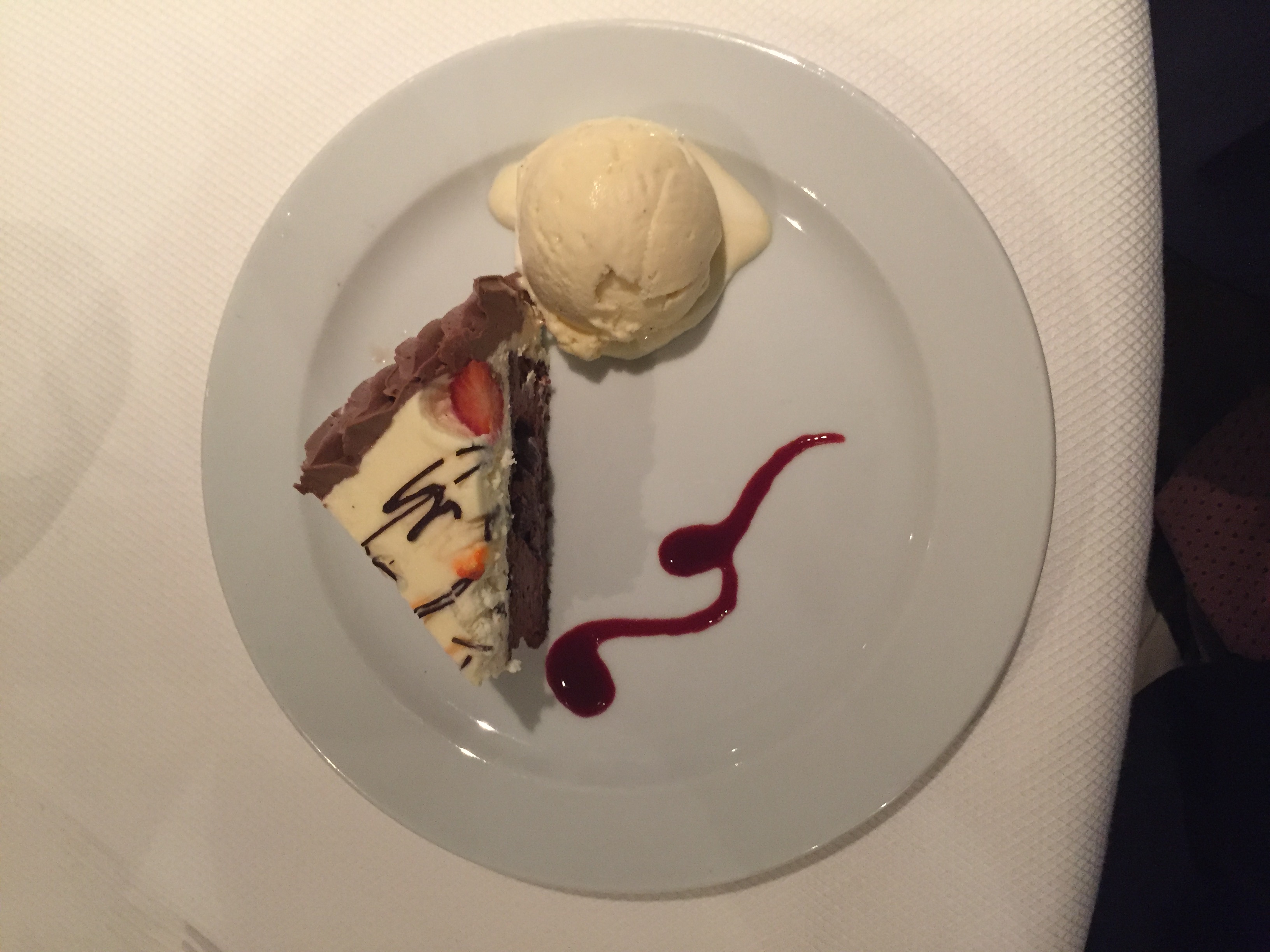Today we rest up from such a busy day yesterday, which included a delightful evening in the Polo Grill restaurant on Deck 10. It was Patricia Watt’s birthday (a picture of part of her birthday cake heads up this post), and we were honored to be among the eight people invited to dine with her in celebration. Of all the people we have met on this ship, Pat definitely is one of those whose friendship we treasure the most. She is thoughtful, positive, energetic, articulate, worldly yet unassuming, and generally just a delight to be with. We had a great time that evening, but it ended late so we start our day a little later than usual. So be it. That’s what Sea Days are for.
As far as activities are concerned, we did very little except read (Cathy) and write (Steve). But we are heading for Napier, New Zealand, a community that has two interesting and interconnected distinctions: 1) much of it was destroyed in an earthquake in 1931 and 2) when the city was rebuilt, the prevalent architectural style employed was Art Deco. The city, with considerable justification, advertises itself as the Art Deco Capital of the World.
Tomorrow’s post will center almost exclusively on the architecture, so this one will take up the earthquake that devastated the city, resulting in its rebuilding. The earthquake is officially known as the Hawkes Bay Earthquake, Hawkes Bay being the body of water east of Napier and Hastings, the towns where the vast majority of the death and destruction took place.
The earthquake’s epicenter was actually ten miles north of Napier and began at 10:47am on February 3rdof 1931. It lasted for two minutes and twenty seconds and registered 7.8 on the Richter scale. 93 people died in the town of Hastings and 161 in Napier. Nearly all buildings in the central areas of both towns were leveled.
In Napier, those buildings that weren’t leveled ended up destroyed in the enormous fire that followed. The fire started in a chemist’s shop on Hastings Street, and a second one in the rear of the Masonic Hotel. As most of the water mains were destroyed, the fire department was helpless to save most structures, especially when the wind changed direction and came from the east. Some buildings in the south side of town were saved as firemen drew water from the adjacent Clive Bay.
The most bizarre affect of the earthquake was the uplift. The land under Ahuriri Lagoon was lifted almost nine feet, draining almost 5,000 acres of land. Today that land is home to the airport, industrial parks and farmland. During the rebuilding process, all of the rubble – essentially the entire downtown – was dumped in some of the swampland that was left and is the location of a very nice suburb, with most of the houses built in the Art Deco style. The uplifted lagoon area is today the upscale suburb of Ahuriri, which means “Gift From the Sea” in the Maori language. All of this additional brand new property was leased through a Harbour Board with the financial benefit accruing to the community.
The event could have been even more catastrophic had not the Royal Navy ship HMS Veronica been in the harbor. All communications with the outside world had been cut off, and it was the ship’s radio messages that alerted people outside of the devastated area to the event and enabled the Royal Navy to immediately dispatch two cruisers to the area to help. Additionally, the Veronica’ssailors fought fires and rescued people buried in the rubble. The ship itself was grounded for weeks afterward due to the uplift.
The New Zealand government, realizing that this natural disaster was far more that the Napier municipal government was going to be able to handle, appointed two commissioners to oversee rebuilding. They both apparently did such an admirable job that one of them was asked to run for mayor (he declined).
The rebuilding of Napier largely took place between 1931 through 1933, with 111 new buildings being built, virtually all in the Art Deco style that was at its height of popularity at the time. Much of the residential housing development that took place during this period utilized Art Deco design, with flat roofs, rounded corners and other elements.
So we are very much looking forward to having an opportunity to tour this unique community. Cathy and I have been very fond of the Art Deco style for years. The Empire State Building, the Chrysler Building, Rockefeller Center and dozens of other beautiful buildings in New York and elsewhere have always been appealing, and an opportunity to see 140 more examples (virtually all of them less than four stories high) in one small city is not to be missed. We are very fortunate to have this opportunity. Can’t wait!





